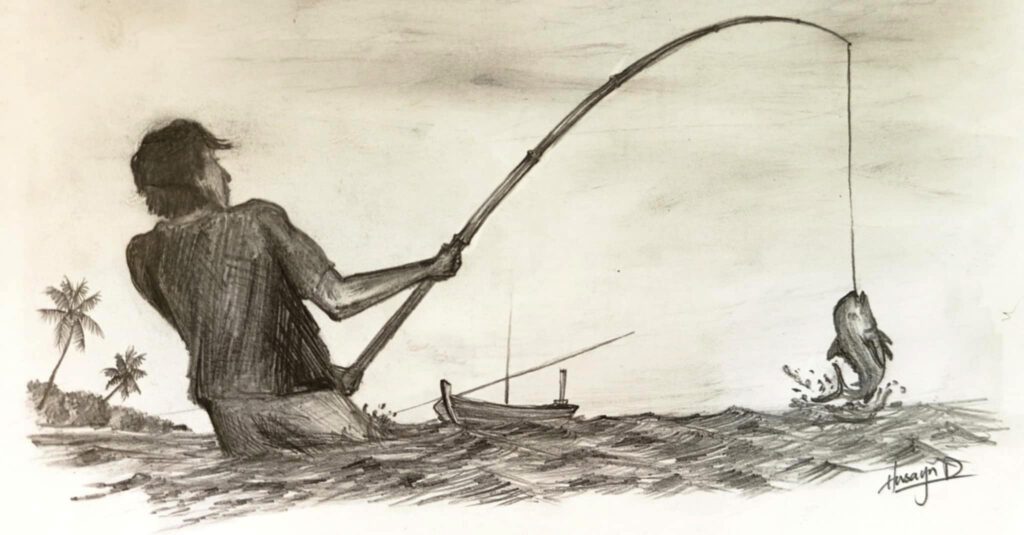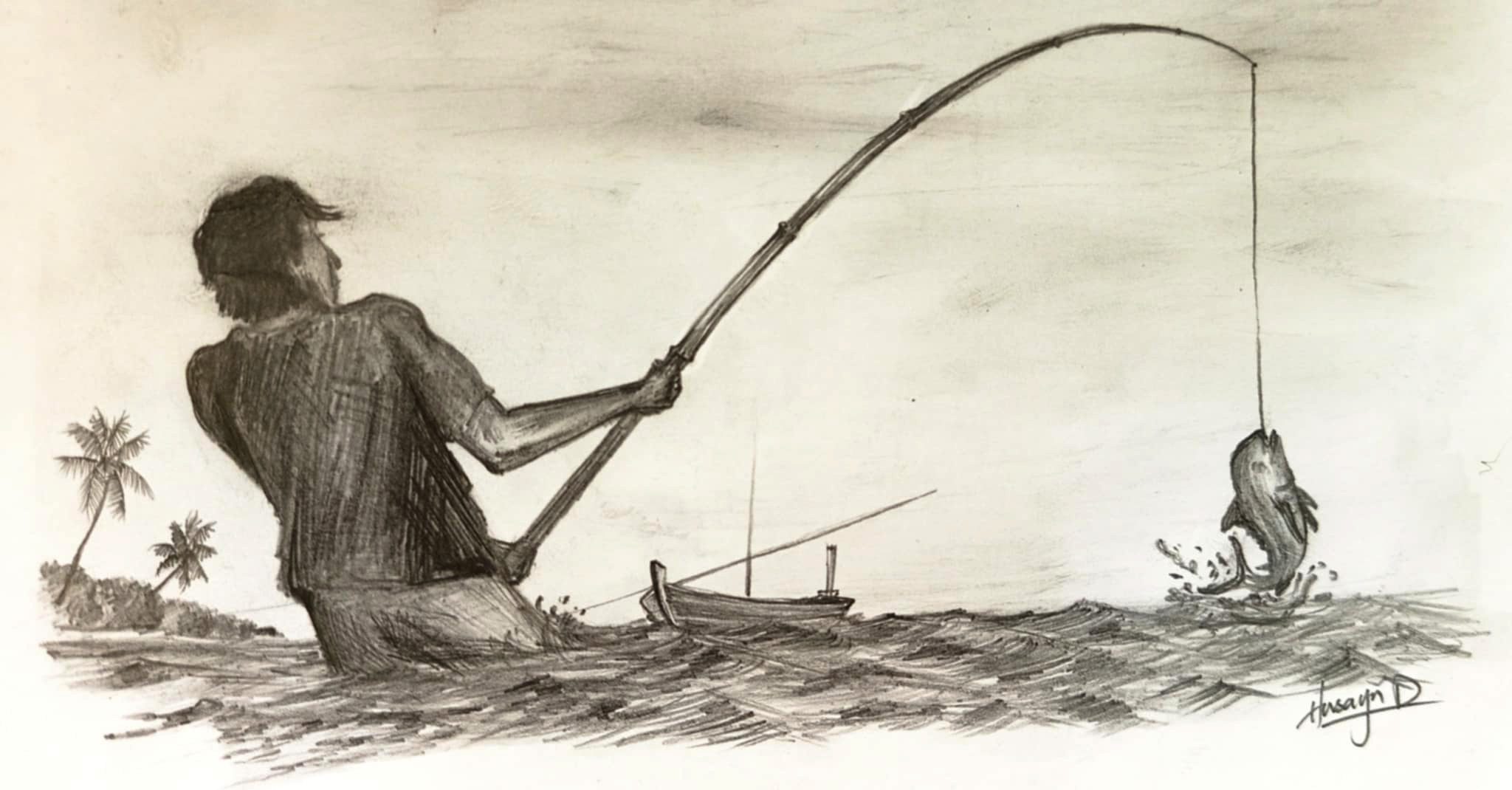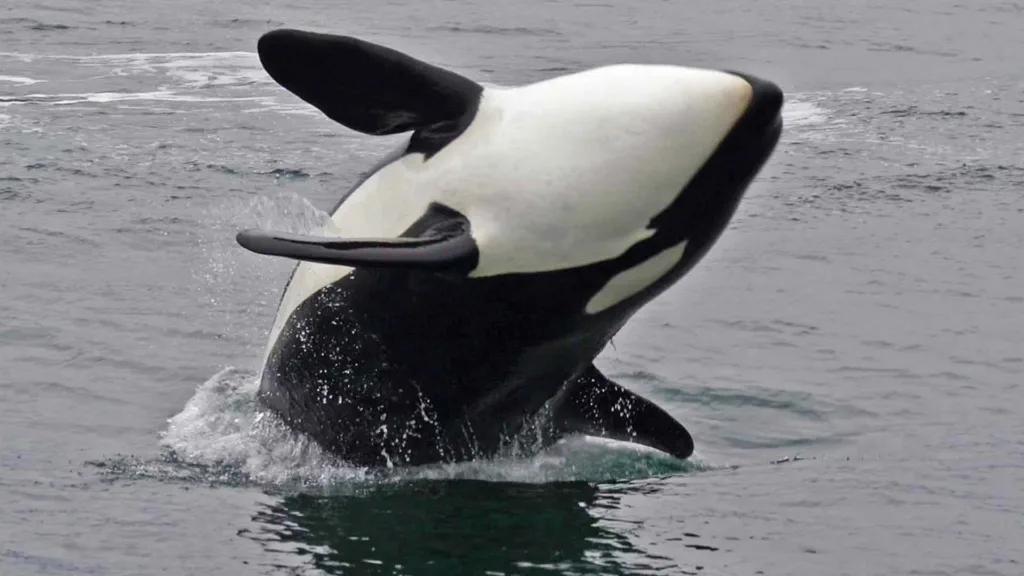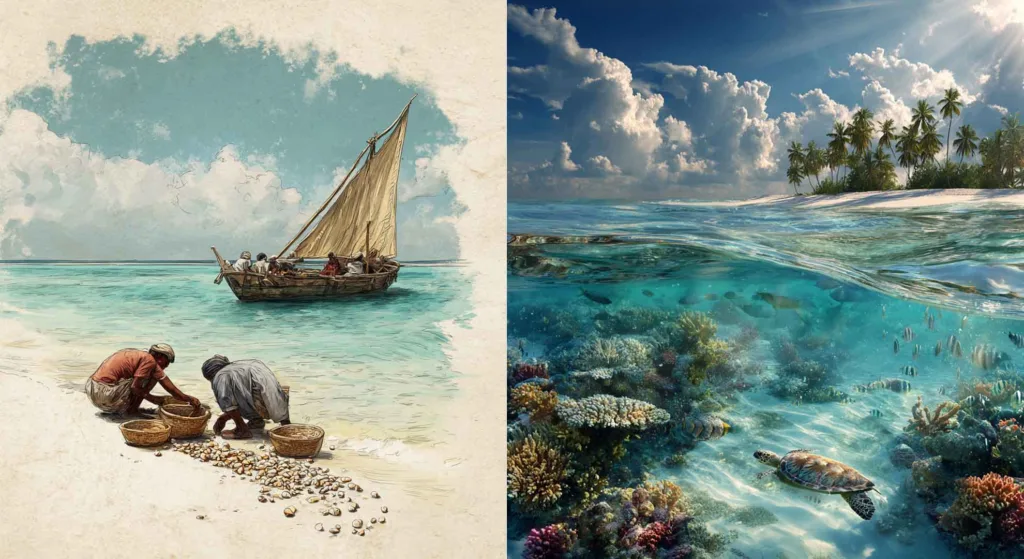
This article is about a thrilling fishing method exclusively used in Fuvahmulah. It’s a battle of the masters against the powerful predator Giant Trevally. Every cast of the masters invited a brutal encounter with the ocean’s most formidable predator. It literally took them off their feet. But the masters invented a technique to beat these beasts. It tests the skill, strength, and perseverance of specialist fishermen. The moment a GT strikes, the water explodes into chaos, marking the commencement of a fierce and unpredictable battle between the masters and these powerful fish of the ocean.
In early days, a special technique of fishing called Vevelhejeun is used by fishermen of Fuvahmulah. This is a casting fishing method used to land some types of fish from the open sea near the fore reef or reef edge of the island. But this is a special method to land Giant Trevally. We called it Maa Mudu.
According to fishermen who are specialized in this method, the most powerful species that they encounter is hudhuhelakanfa. They say these species are the most powerful among the GTs.
This method deploys a bamboo pole (often 8 to 10 feet in length) and a fishing line. Normally the line is twice the length of the pole. The masters stay on the reef flat, near the fore reef that is adjacent to the open ocean. The bait used is dead flying fish. The fish is hooked from the belly, and the tip of the hook comes out of the backbone of the fish. Threads are swirled around the area where the hook is attached. They cast the pole, and the dead flying fish is dragged along the surface to attract the GT. Variations in casting would be carried out by the master—slow retrievals and pauses.
The masters pull the bait on the surface by maneuvering slow retrievals, allowing the lure to sink for a moment before continuing, causing big splashes. Casting is carried out as close as possible to where waves are hitting. It is a daunting effort, but the reward could be huge. It’s physical, exciting, and at the same time could be heartbreaking as the master could lose the trophy. Aggressive surface strikes are one of the elements of excitement triggering an adrenaline rush, as nothing beats the sight of a rising GT in front of the masters when the predator has swallowed the bait whole. There is a rush of excitement as water explodes when the predator ferociously smashes the bait as if it had hooked on to the back of an express speedboat.
Then it is the instinct of masters to jump into the ocean. These apex predators swim away into the deep ocean. The only way to beat them at their game is to stop their powerful run, and it is not an easy feat. Plenty of muscle would be needed to stop these brutes. According to elderly people, masters jump into the ocean due to the powerful force exerted on the pole—so tremendous that it would be impossible to stay on the reef to hold the pole and stop the powerful runs. According to them, it is easy to thrash the predator if masters jumped into the open ocean. The daring leap into the open ocean is risky, but it is a breathtaking scene and skill.
Masters jump into the sea holding the pole when giant GTs are impossible to land while standing on the reef. The masters would hold the pole between their underarm and try to float on the surface as much as they could. They would start to thrash the predator by exerting force on the pole towards the surface.
This maneuvering is extremely risky as the powerful creature could plunge the fisherman relatively deep into the ocean, resulting in suffocation. For enthusiasts, watching this excitement on the beach would be puzzling, and a sense of fear would also prevail in their minds. These predators are truly some of the toughest creatures swimming the seas. They are extremely versatile. Therefore, some people on the beach would stay prepared to help the masters if anything went wrong.
As the GT heads towards the deep sea, sometimes the masters are plunged 5 to 10 feet below the surface. But they would ascend in seconds by holding the pole and thrashing the predator. This extreme fishing method would take 30 to 40 minutes, sometimes an hour, to completely beat the creature. After ferocious battles between the masters and the powerful creatures, the masters would swim towards the reef flat with the trophy. According to elderly people, the greatest GT master was the late Hoonige Kudhubei.




